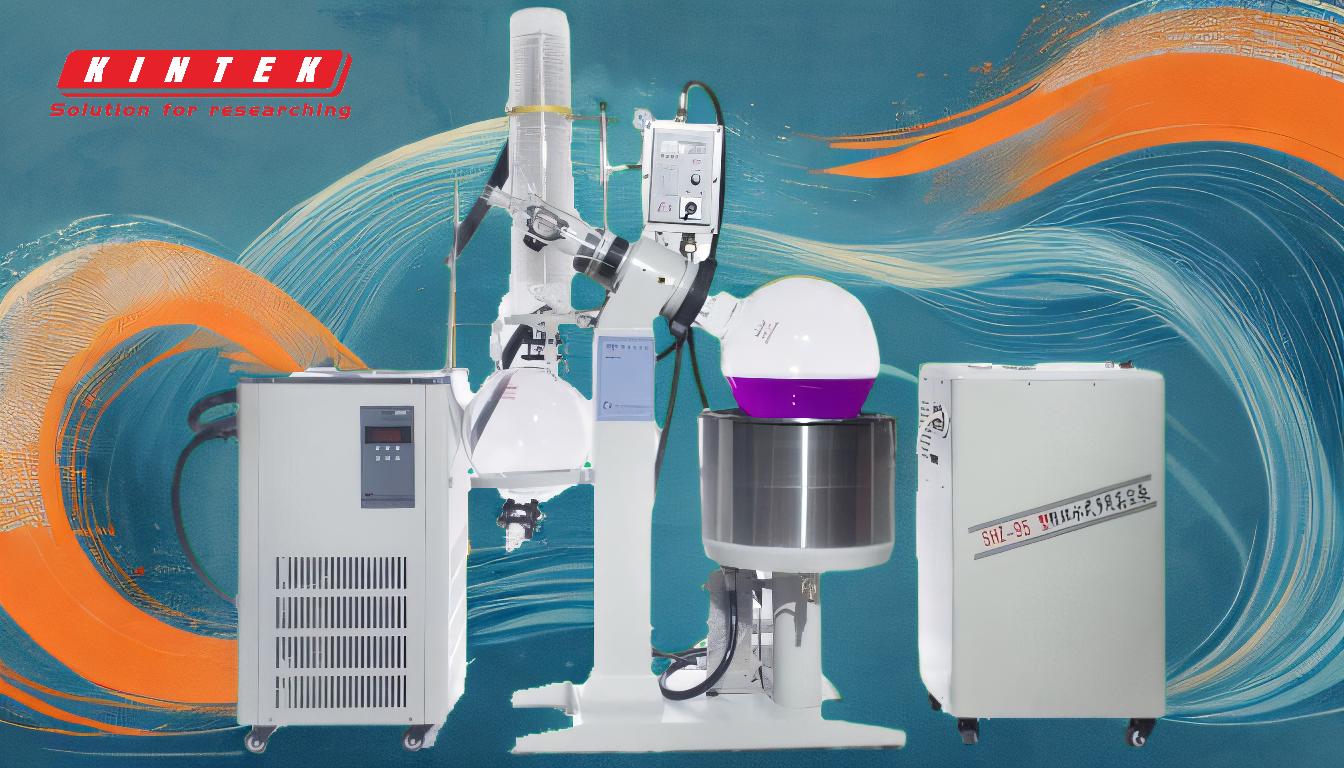Rotary evaporation is a common technique used in laboratories to remove solvents from samples under reduced pressure. Knowing when the process is complete is crucial to ensure efficiency and safety. The process is considered done when the solvent has fully evaporated, and no further liquid is visible in the rotary flask. To confirm completion, the system should run for a few additional minutes to ensure no residual solvent remains. Afterward, the vacuum is released, the flask is raised from the water bath, and the rotation is stopped. Proper cleaning and preparation for the next use, such as emptying the receiving flask and cleaning the bump trap, are also essential steps.
Key Points Explained:

-
Determining Completion of Evaporation:
- The primary indicator that the rotary evaporation process is complete is the absence of visible liquid in the rotary flask. This suggests that the solvent has fully evaporated.
- To ensure no residual solvent remains, the system should continue running for a few minutes after the evaporation appears complete. This step is crucial for achieving a thorough removal of the solvent.
-
Post-Evaporation Steps:
- Releasing the Vacuum: Once the solvent has evaporated, the vacuum should be turned off, and the system should be returned to atmospheric pressure. This prevents sudden pressure changes that could disturb the sample or cause splashing.
- Raising the Flask: The rotary flask should be carefully raised out of the water bath to avoid any accidental spillage or contamination.
- Stopping the Rotation: The rotation of the flask should be discontinued to safely remove the flask from the system.
-
Cleaning and Maintenance:
- Bump Trap Cleaning: The bump trap, which prevents splashing of the sample into the condenser, should be cleaned after each use. However, this step may not always be necessary unless specified by lab protocols.
- Emptying the Receiving Flask: The receiving flask, which collects the condensed solvent, should be emptied into the appropriate solvent waste container. This step is essential for maintaining a clean and safe workspace.
- Preparing for the Next Use: If the solvent collected is pure enough, it can be reused for future experiments. The system should be prepared for the next evaporation process by ensuring all components are clean and ready.
-
Safety Considerations:
- Avoiding Sudden Pressure Changes: When releasing the vacuum, it is important to do so slowly, especially if a fine powder remains in the flask. Sudden pressure changes can cause the powder to spray, creating a potential hazard.
- Turning Off Equipment: After the process is complete, all equipment, including the vacuum source, water bath heating, and cooling water, should be turned off to conserve energy and prevent overheating.
-
Final Collection and Reuse:
- Collecting the Solvent: The pure, condensed solvent collected in the receiving flask can often be reused multiple times, reducing waste and saving costs.
- Sample Retention: The sample remains in the rotary flask, ready for further processing or analysis.
By following these steps, you can ensure that your rotary evaporation process is completed efficiently and safely, with proper maintenance and preparation for subsequent use.
Summary Table:
| Step | Description |
|---|---|
| Completion Indicator | No visible liquid in the rotary flask. |
| Post-Evaporation Steps | Release vacuum, raise flask, stop rotation. |
| Cleaning & Maintenance | Clean bump trap, empty receiving flask, prepare for next use. |
| Safety Considerations | Avoid sudden pressure changes, turn off equipment after use. |
| Final Collection & Reuse | Collect and reuse solvent, retain sample in rotary flask. |
Need expert advice on rotary evaporation? Contact us today for tailored solutions!










